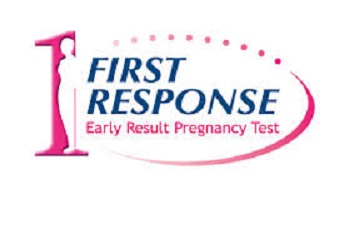 At the time I didn’t think so, but when I became pregnant with our first child it was a fairly easy process. I am not referring to the “act” itself, but rather to my body’s ability to actually get pregnant. I know many for whom it is a very long, very emotional, and sometimes financially draining experience. For those trying to conceive, the process is not always as simple as one would hope. Below, FIRST RESPONSE™ helps debunk the myths around conception, fertility and timing.
At the time I didn’t think so, but when I became pregnant with our first child it was a fairly easy process. I am not referring to the “act” itself, but rather to my body’s ability to actually get pregnant. I know many for whom it is a very long, very emotional, and sometimes financially draining experience. For those trying to conceive, the process is not always as simple as one would hope. Below, FIRST RESPONSE™ helps debunk the myths around conception, fertility and timing.
For all couples trying to conceive, there are some general guidelines to consider[1]:
- 30% get pregnant within the first cycle (about one month)
- 59% get pregnant within three cycles (about three months)
- 80% get pregnant within six cycles (about six months)
- 85% get pregnant within 12 cycles (about one year)
- 91% get pregnant within 36 cycles (about three years)
- 93-95% get pregnant within 48 cycles (about four years)
Those are some pretty staggering statistics, if you ask me. Most people don’t even consider these numbers when thoughts turn to starting a family; and really, who could blame them. If you are looking to start (or grow) a family sooner, rather than later, it doesn’t hurt to try and stack the books in your favour by following some important steps to make getting pregnant as seamless as possible.
1) Start with a pre-pregnancy trip to a trusted doctor. A credible doctor will be able to discuss the most important topics when it comes to conceiving, like menstrual cycle timing and regularity, parents’ medical history, exercise, eating habits and more. Try and find a doctor you will feel comfortable going to well after your child is born. Better yet, one that has an expanding family practice so the whole gang can have the same doctor as time goes on. I love that my doctor knows, and treats all four of us.
2) Lead a healthy and happy lifestyle. Simple changes like getting more sleep, and spending extra time with friends and family can do wonders for the body. Reducing stress is another important element as stress can cause irregular ovulation and can disrupt a woman’s menstrual cycle—affecting overall fertility[2].
3) Understand your peak fertile days. If a woman knows her most fertile days, it can help speed up the pregnancy and planning process. The FIRST RESPONSE™ Digital Ovulation Predictor Test is over 99% accurate for detecting a woman’s personal luteinizing hormone (LH) surge, giving an easy and accurate way to determine the two days a month when each woman is most likely to ovulate[3]. If intercourse happens within the 24-36 hour window, this will maximize her chances of getting pregnant.
By helping to determine a woman’s unique peak fertility days, and understanding her body, FIRST RESPONSE™ can help speed up the pregnancy process.
There are never any guarantees in this life, but if becoming pregnant is part of the plan for your future than it is worth the effort, right?
FT&PD
Suz
[[1]] http://www.babycenter.com/how-long-does-it-take-to-get-pregnant
[2] http://www.firstresponse.com/pregnancy-preparation
[3] http://www.firstresponse.com/pregnancy-preparation-step3

These are such a great tips. My husband and I were talking the other night, and we think it’s time to start trying for kids. It’s kind of scary, but we’re excited, for sure. I love the first tip about taking a pre-pregnancy trip to a trusted doctor. You definitely want professional help when it comes to something like this. Also, I like the third point, about understanding your peak fertile days. I’ll have to do a bit more research on that.
What a wonderful and exciting decision to make Megan, congratulations! Yes, there is a lot to think about and it seems to me you have your head on straight. Good luck with the next part and make sure you share your great news when the time comes
I won’t be needing any of this info for myself but i will be passing it along to my daughter!